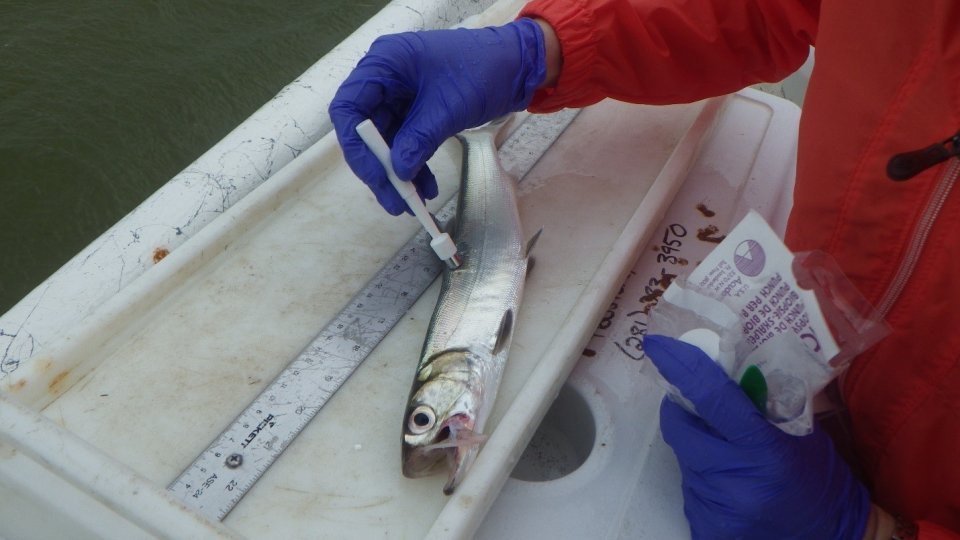Indicators: Fish Fillet Tissue Contaminants
What are fish fillet tissue contaminants?
Fish fillet tissue contaminants are contaminants in the environment that bioconcentrate in fish and may accumulate through the food chain. Chemicals discharged from urban, industrial, agricultural and natural sources can enter waterbodies and settle in sediments, dissolve into the water, or become absorbed into biological specimens, like fish. These contaminants include mercury, polychlorinated biphenyls, ( or PCBs,) and per- and polyfluoroalkyl substances, or (PFAS,) among other toxic chemicals. These chemical contaminants persist for long periods in sediments where bottom-dwelling animals accumulate and pass them up the food chain to fish, and to humans who eat locally caught fish. Contaminant levels may increase as they move up the food chain, so top predator fish species (such as Largemouth Bass or Walleye) may have contaminant levels much higher than the contaminant levels measured in the water.
Why is it important to measure fish fillet tissue contaminants?
It is important to measure fish fillet tissue contamination to estimate the potential health risk to humans who eat locally caught fish. To determine the risk, the fish tissue contaminants are measured in the fillet, the most commonly consumed portion of the fish. Mercury contamination is assessed using whole fish fillets in some studies and using fillet biopsy plug samples in others. The results of each sampling method have been demonstrated to show comparable measures of mercury contamination regardless of the method used. Elevated contaminant concentrations may prompt a state to issue consumption advisories and restrictions for specific fish species and waterbodies to protect people from the potential risk of eating contaminated fish caught in local waters.
What can fish fillet tissue contaminants tell us about the condition of water?
Levels of fish tissue contamination are important indicators of the waterbody health and how safe a waterbody is for fish consumption. If there are fish consumption advisories in place, recreational fishing may be limited to catch and release. Areas with high levels of fish tissue contamination may have been subjected to current or past toxic discharges or spills from industrial, urban, and agricultural sources. Mercury, which is prevalent in fish and shellfish, can also enter waters via atmospheric deposition from volcanic action or from distant coal-burning power plants or hazardous waste incineration. PFAS can travel in the atmosphere and enter waterbodies via deposition as well.

How is this indicator used in NARS?
Three surveys collect fish fillet tissue contaminant data. Data are available on the NARS data page for these surveys. Below the table you access assessment information in current reports.
| NLA | NRSA | NCCA | NWCA | Indicator Type |
|---|---|---|---|---|
| X | X | X | Core Indicator | |
| Research Indicator |
National Lakes Assessment Web Report – Fish Fillet Tissue Results
National Rivers and Streams Assessment Web Report – Fish Fillet Tissue Results
National Coastal Condition Assessment Web Report – Coming Soon.
